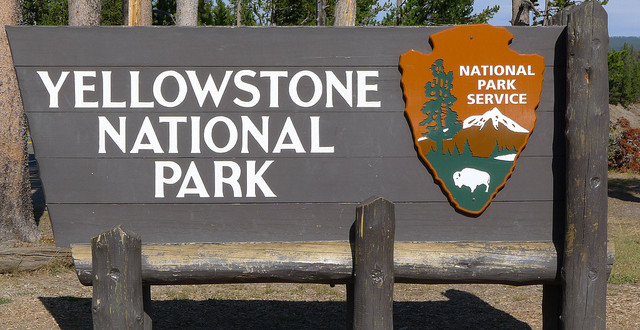2017 marked the second busiest year on record for Yellowstone National Park, with nearly 4.2 million visits recorded.
The busiest year on record, of course, remains 2016, the same year of the National Park Service’s centennial, when approximately 4.3 million people came to the park.
According to a Yellowstone press release, 4,116,525 people came to Yellowstone in 2017. For comparison, 4,257,177 people came to the park in 2016.
Visitation has been on the rise in Yellowstone National Park for nearly a decade. Indeed, visitation has risen nearly 40 percent since 2008.
The uptick in visitation has put strains on Yellowstone’s infrastructure and visitor facilities, with problems ranging from traffic jams and lack of parking to long lines at bathrooms to incidents involving wildlife. The infrastructure issue is especially worrying, since the National Park Service has an estimated $12 billion backlog in maintenance work.
Last summer, the park released a pair of traffic and visitor use surveys that concluded, among other things, that Yellowstone’s road system might become terminally poor by 2021-23 due to vehicle volume. Another study, published by the University of Montana in April 2017, concluded that, in the short term, overcrowding is having bad effects on places like Yellowstone and Glacier National Parks.
However, the UM study also concluded there are ways to ameliorate these bad effects, including putting more rangers in place to monitor for bad behavior and for states to promote nearby parks and attractions to “spread the wealth” of visitors.
Yellowstone Superintendent Dan Wenk has said the park will continue to gather visitor information in 2018 and 2019 “in order to make informed decisions about visitation.”
In response to increasing visitation, some parks have instituted or floated the possibility of limiting the number of vehicles and visitors allowed on a daily basis. Other parks have suggested limiting the number of individual vehicles on the road, pushing instead for shuttle or bus travel.
Last fall, the National Park Service and the Department of the Interior proposed raising entry fees during “peak season” for 17 parks, including Yellowstone and Grand Teton National Park. Under this proposal, it would cost $70 for a seven-day pass for a standard car; it currently costs $30 for a seven-day pass. Critics have said this proposal would price out people from visiting/enjoying national parks.
Interior Secretary Ryan Zinke argues the hike is necessary to address the NPS’ maintenance backlog. The fee hike would generate an estimated $70 million in additional revenue, although it is not known whether this prediction assumes visitation numbers will remain constant. Indeed, another University of Montana study warns gateway communities could lose over 3 million in annual revenue due to fee hikes.
 Yellowstone Insider Your Complete Guide to America's First National Park
Yellowstone Insider Your Complete Guide to America's First National Park





